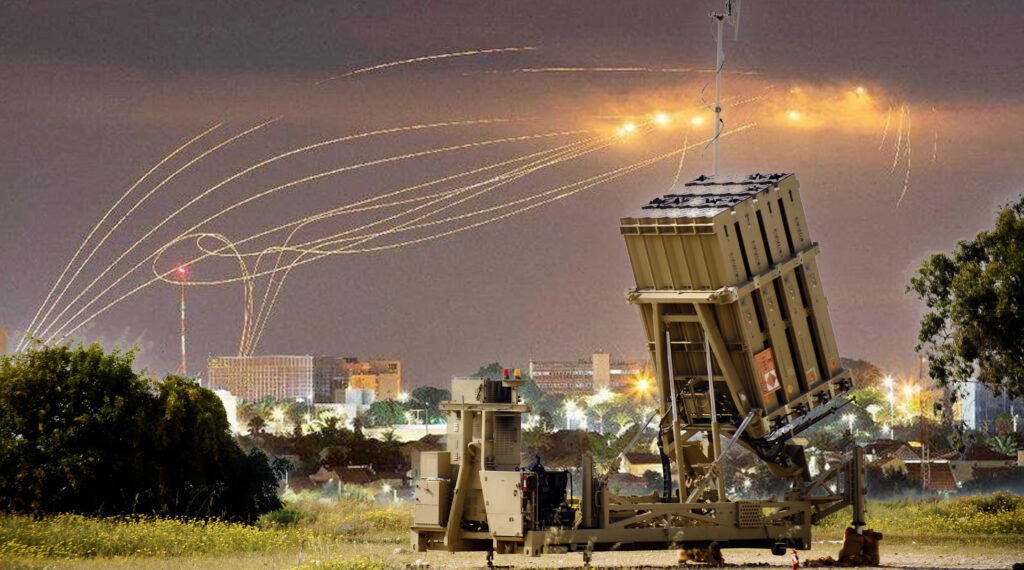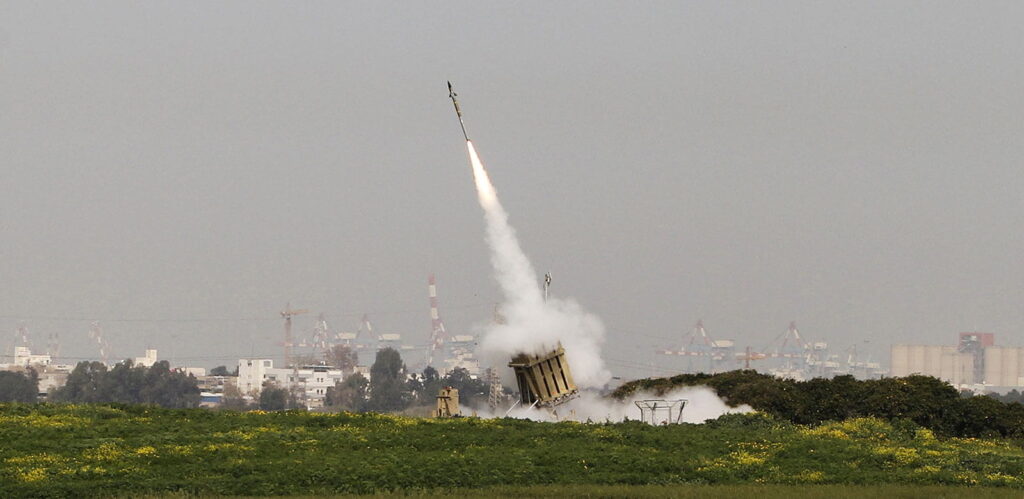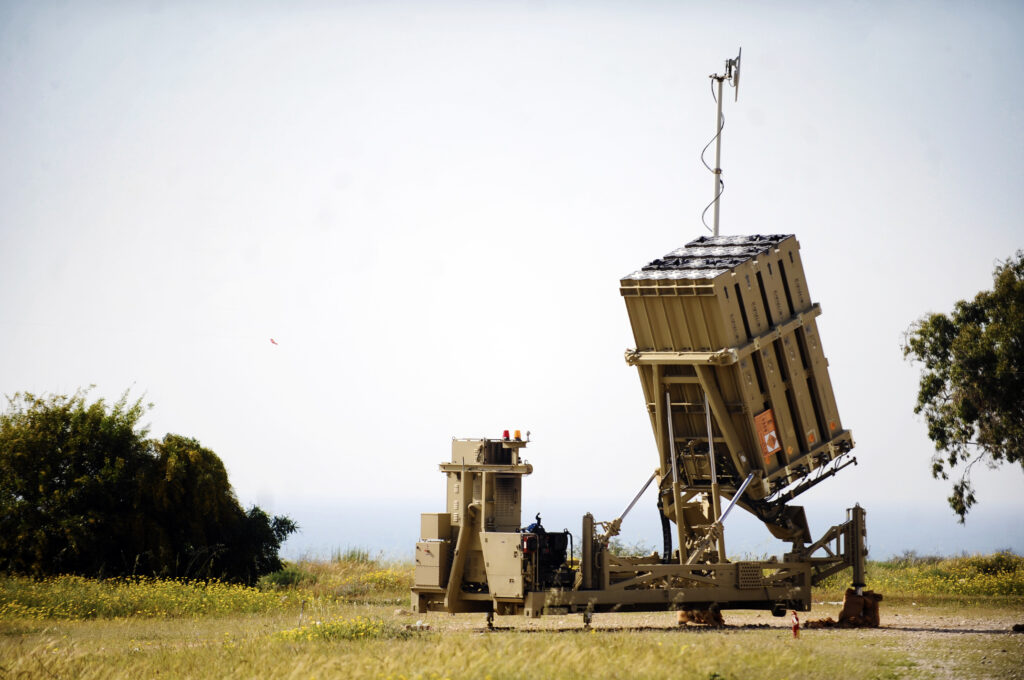SANDBOXX

On Saturday, the Palestinian terrorist group Hamas launched a land and sea attack on Israel along with a barrage of thousands of rockets. Rocket attacks are nothing new for Israel or its world-renowned Iron Dome air defense system, but as rockets continued to pour into the country, it soon became evident that not all inbound weapons were being intercepted.
In our modern upvote/downvote culture, we have a habit of robbing complex topics of their nuance, and air defense is no exception. The common perception that modern air defenses serve as something akin to a shield capable of stopping all incoming threats, however, isn’t reality. Air defense is an extremely complex enterprise, and even the best systems in the world can’t stop everything.
WHAT IS THE IRON DOME?

An Iron Dome interceptor missile.
Israel’s Iron Dome is a mobile short-range missile defense system developed by the Israeli companies Rafael, Elta Systems, and mPrest Systems with a specific focus on intercepting the sorts of short-range rockets and artillery attacks often mounted by Hezbollah (from Lebanon) and Hamas (from the Gaza Strip). Its development started in 2007 and it became operational in 2011.
Like many other air defense systems, an Iron Dome battery is comprised of multiple separate components, including a battle-management system, a fire control radar array, and between three and four launchers, each capable of carrying up to 20 Tamir missile interceptors.
Iron Dome can intercept munitions up to almost 45 miles away. But distance isn’t helping the Israelis in this conflict. The Gaza Strip, where Hamas is headquartered and from where it launches most of its attacks against Israel, is approximately 37 and 47 miles from Tel Aviv and Jerusalem, respectively. That means that the Iron Dome often has less than 120 seconds to intercept an incoming munition from the time it’s fired. That’s an extremely short amount of time and requires constant vigilance and superb capabilities to counter.
However, the Iron Dome does not operate on its own. Instead, it makes up the lower-altitude portion of a three-system approach to Israeli air defense, with another system known as “David’s Sling” focused on slightly higher altitudes and longer rangers than the Iron Dome, and yet another system dubbed “Arrow” serving as a long-range defense.
HOW DOES THE IRON DOME PROTECT ISRAEL?

Iron Dome launcher
Israel maintains at least 10 Iron Dome batteries for short-range defense against rockets and similar attacks. These batteries are placed strategically around densely populated areas and valuable infrastructure. Each battery has a publicly disclosed protective umbrella that covers about 60 square miles, giving Israel a total area of only some 600 square miles under the Iron Dome’s protective eye.
When the Iron Dome’s radar array detects an incoming target, it uses an artificial intelligence-enabled algorithm to rapidly determine its trajectory and assess whether to engage it or not. This is important, as Israeli Tamir interceptor missiles can range in cost from $20,000 to $100,000 each, but do-it-your-own rockets launched by Hamas regularly ring in as low as just $300 each, making each intercept a losing fiscal proposition in even the best of cases.
If the incoming target poses a threat to citizens or infrastructure, the system calculates an intercept point in the target’s trajectory and launches a Tamir missile toward that point, steering the interceptor toward the target via radar until it is close enough to transition over to its onboard infrared seeker for terminal guidance.
Israel’s claimed success rate with the Iron Dome is extremely high – often between 85% and 90%. Yet, this figure doesn’t mean that Israel intercepts between 85% and 90% of all rockets, mortars, or drones, but rather that it successfully intercepts between 85% and 90% of the targets it deems to be a legitimate threat.
REACHING A SATURATION POINT

Israel’s Iron Dome may be highly capable, but no air defense system is invincible. Many have exaggerated expectations of what such systems are capable of, and as a result, see any failed intercept as a failure of the system itself. There are a number of limitations these systems contend with and one of the most prominent is their saturation point, something that Hamas took advantage of.
Air defense systems can only track, target, and intercept so many incoming threats at once before becoming overwhelmed. Their limit is called the saturation point. With thousands of rockets pouring in from Gaza, Israel’s Iron Dome batteries often reached saturation points that allowed rockets to pass through without being intercepted due to the physical limitations of the system itself.
Also, the Palestinian fighters have had years to study the Iron Dome and understand its weaknesses. For example, they could have calculated how long it takes for the Israelis to reload the air defense batteries. Taking advantage of the system’s saturation point and those windows Hamas pierced the Iron Dome and managed to get munitions through its umbrella.
Nevertheless, at the end of the day, the Iron Dome really does live up to its hype – but no system, no matter how capable, can stop everything. And as Hamas terrorists continue to lob thousands of missiles and rockets into Israel following their surprise attack, the Iron Dome is often what stands between life and death for many innocent civilians.
No comments:
Post a Comment